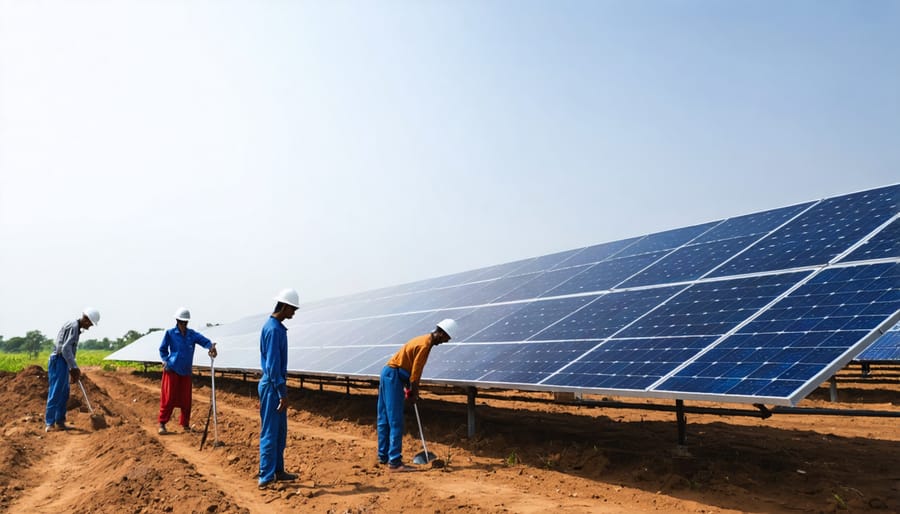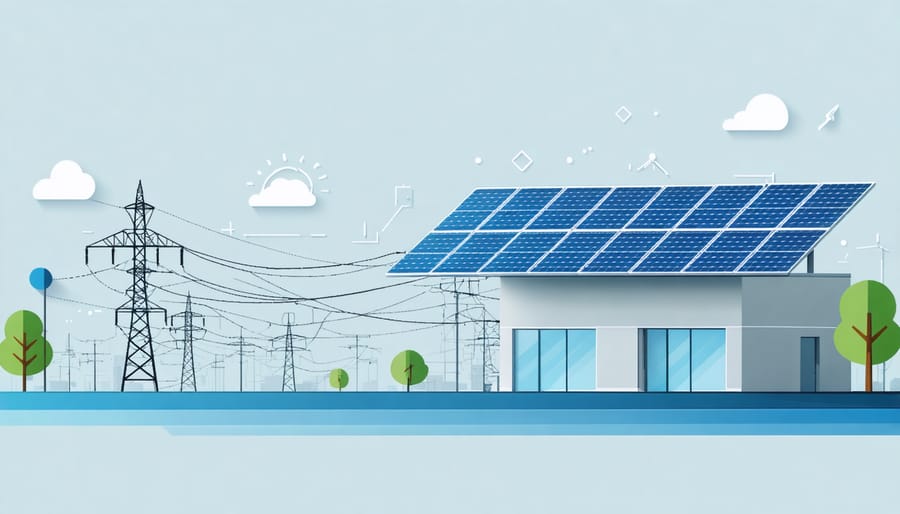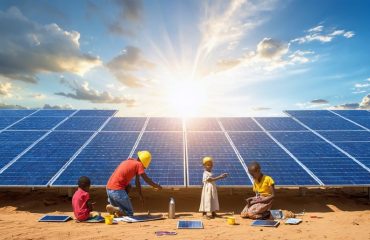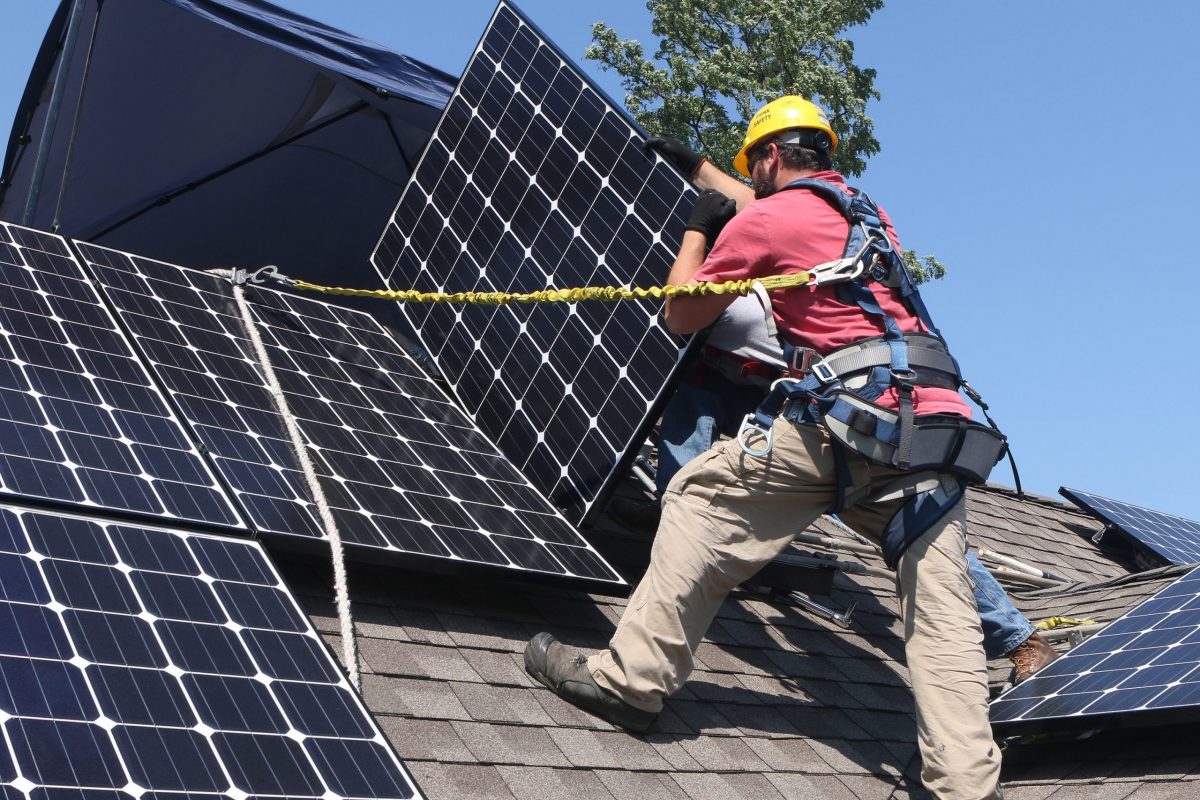Big emerging markets are reshaping the global economic landscape, driving unprecedented growth and transformation across developing nations. As traditional powerhouses like China and India continue their ascent, a new wave of emerging solar markets and economic frontiers is capturing investors’ attention worldwide.
These dynamic markets, characterized by rapid urbanization, growing middle classes, and technological leapfrogging, represent the next great opportunity for global business expansion. With populations often exceeding 100 million and GDP growth rates consistently outpacing developed nations, countries like Indonesia, Brazil, and Vietnam are becoming increasingly attractive destinations for international investment.
The convergence of digital innovation, sustainable development, and demographic advantages is creating unique opportunities across sectors – from renewable energy and infrastructure to consumer goods and financial services. As these markets mature, they’re not just following established development patterns; they’re pioneering new models of growth that combine technological advancement with sustainable practices.
For businesses and investors, understanding these evolving markets isn’t just about capturing new opportunities – it’s about participating in the most significant economic transformation of our time. The shift in global economic power from West to East and North to South is creating a new multipolar world order, where emerging markets are increasingly setting the pace for global growth and innovation.
The Rise of Solar Giants: Key Markets Leading the Change
India: The Solar Superpower in Making
India’s remarkable journey toward solar energy dominance is reshaping the global renewable energy landscape. With ambitious targets to achieve 500 GW of renewable energy capacity by 2030, India is rapidly emerging as a solar superpower, driven by favorable government policies, declining technology costs, and abundant sunshine.
The country’s solar capacity has grown exponentially, from just 2.6 GW in 2014 to over 60 GW in 2023, making it one of the world’s fastest-growing solar markets. This growth is supported by innovative initiatives like the International Solar Alliance and the National Solar Mission, which have attracted substantial domestic and international investment.
What sets India apart is its unique approach to solar deployment, combining utility-scale projects with decentralized solutions. The world’s largest solar parks in Rajasthan and Gujarat showcase India’s capability to execute massive renewable energy projects, while rooftop solar installations are making clean energy accessible to millions of households and businesses.
Cost competitiveness has been a game-changer, with solar tariffs dropping below conventional power sources. This price advantage, coupled with government incentives and renewable purchase obligations, has created a sustainable ecosystem for continued growth. India’s domestic manufacturing capabilities are also expanding, reducing dependence on imports and creating thousands of green jobs.
Looking ahead, India’s solar journey represents not just an energy transformation but a model for sustainable development in emerging economies.

Brazil’s Solar Revolution
Brazil’s solar energy sector has experienced remarkable growth in recent years, transforming the country into a leading force in renewable energy adoption across Latin America. The combination of abundant sunshine, decreasing equipment costs, and supportive government policies has created perfect conditions for solar expansion.
Since 2018, Brazil has seen its solar capacity multiply tenfold, with both utility-scale projects and residential installations contributing to this surge. The country’s net metering program has been particularly successful, allowing homeowners and businesses to generate their own electricity and sell excess power back to the grid.
Major investments in solar manufacturing have also positioned Brazil as an emerging hub for solar panel production. Several international companies have established facilities in the country, creating jobs and reducing dependency on imported solar equipment.
Rural communities have been significant beneficiaries of this solar boom. In areas where traditional grid connections were costly or impractical, solar installations have provided reliable electricity access while supporting agricultural operations. Innovative financing models, including solar leasing and community solar projects, have made clean energy accessible to a broader segment of the population.
Looking ahead, Brazil’s solar sector is projected to maintain its strong growth trajectory. The government’s commitment to renewable energy, combined with increasing environmental awareness and falling technology costs, suggests that solar power will play an increasingly important role in Brazil’s energy mix.
Why These Markets Matter for Global Solar Growth

Economic Drivers
The rapid expansion of big emerging markets is primarily driven by the compelling economic benefits of solar energy and favorable market conditions. Decreasing solar panel costs, which have dropped by over 80% in the past decade, make solar installations increasingly accessible to homeowners and businesses alike. Government incentives, including tax credits and rebates, further enhance the financial appeal of solar adoption across these growing markets.
Local job creation serves as another powerful economic driver, with the solar industry generating employment opportunities in manufacturing, installation, and maintenance sectors. This economic ripple effect strengthens local economies while supporting sustainable development goals. Additionally, reduced energy costs provide businesses with competitive advantages, allowing them to allocate resources more efficiently and invest in growth initiatives.
The promise of energy independence also plays a crucial role, particularly in regions with unreliable grid infrastructure or high electricity costs. By generating their own power, communities can reduce dependency on traditional utilities while ensuring more stable energy prices. This self-sufficiency, combined with the potential for selling excess energy back to the grid through net metering programs, creates compelling financial incentives for both individual consumers and commercial enterprises to invest in solar technology.
Environmental Impact
The growth of big emerging markets brings significant environmental implications, particularly in terms of renewable energy adoption and carbon reduction efforts. These markets are increasingly prioritizing sustainable development, with many implementing ambitious clean energy targets and environmental protection policies. China, for instance, has become the world’s largest investor in renewable energy, driving down global costs for solar and wind technologies while working to address its environmental challenges.
India’s commitment to expanding its renewable energy capacity has led to massive solar installations and wind energy projects, helping reduce its dependence on coal-fired power plants. Brazil continues to maintain one of the cleanest energy matrices among large economies, with hydroelectric power playing a crucial role in its energy mix.
However, rapid industrialization in these markets also presents environmental challenges. The increasing energy demand often leads to a complex balance between economic growth and environmental protection. Many emerging markets are adopting stricter environmental regulations, implementing carbon pricing mechanisms, and investing in green infrastructure to mitigate these impacts.
The shift towards sustainable practices in these markets has global implications, driving innovation in clean technologies and setting new standards for environmental responsibility. Their success in balancing growth with sustainability will be crucial in addressing global climate challenges and achieving international environmental goals.
Investment Opportunities and Market Access
Government Incentives and Policies
Governments worldwide are implementing robust policies and incentives to accelerate the growth of emerging markets. These support mechanisms typically include tax breaks, subsidies, and favorable regulatory frameworks designed to attract both domestic and foreign investment.
Many developing nations have introduced feed-in tariffs, which guarantee fixed payments for renewable energy generation, making investments more predictable and profitable. Countries like India and Brazil have established renewable energy targets and implemented auction systems that create competitive market conditions while ensuring stable project development.
Investment incentives often include reduced import duties on clean energy equipment, tax holidays for new manufacturing facilities, and streamlined permit processes. Some governments offer land acquisition support and infrastructure development assistance to facilitate large-scale projects.
Special economic zones (SEZs) have become popular tools for attracting foreign direct investment, offering benefits like simplified regulatory procedures and reduced tax rates. Additionally, many countries have established green financing initiatives, working with international development banks to provide low-interest loans and risk mitigation instruments.
Local content requirements are increasingly common, designed to build domestic manufacturing capabilities while creating local jobs. These policies, combined with workforce development programs and research funding, help establish sustainable industrial ecosystems in emerging markets.
The success of these government initiatives has been evident in the rapid growth of renewable energy capacity and the establishment of robust supply chains in many developing nations.
Infrastructure Development
The rapid growth of big emerging markets necessitates substantial infrastructure development to support increasing energy demands. These markets face significant grid connectivity challenges that require innovative solutions and strategic investments.
Countries like India, Brazil, and Indonesia are prioritizing the expansion of their power distribution networks, implementing smart grid technologies, and modernizing existing infrastructure. These improvements are essential for accommodating the integration of renewable energy sources, particularly solar power, into their national grids.
Transportation infrastructure also plays a crucial role, with emerging markets investing heavily in roads, ports, and railways to facilitate the movement of solar equipment and related technologies. This development reduces logistics costs and improves market accessibility for both domestic and international solar companies.
Digital infrastructure is equally important, with emerging markets implementing advanced monitoring systems and grid management technologies. These innovations help optimize energy distribution, reduce transmission losses, and enable better integration of variable renewable energy sources.
Many of these markets are also focusing on last-mile connectivity, ensuring that rural and remote areas have access to reliable electricity. This approach not only supports social development but also creates new opportunities for distributed solar solutions and microgrids.

Future Outlook: What’s Next for Emerging Solar Markets
The future of emerging solar markets looks exceptionally promising, with several key trends shaping the landscape for the next decade. As solar technology advances continue to drive down costs, we’re seeing unprecedented growth potential in regions previously considered challenging for solar adoption.
India and Southeast Asian countries are positioned to become major players in the solar energy sector, with projections suggesting they could account for up to 40% of global solar installations by 2030. These markets are benefiting from improving infrastructure, supportive government policies, and increasing private investment.
Africa’s solar market is expected to experience remarkable growth, particularly in countries like South Africa, Kenya, and Morocco. The continent’s abundant sunshine and growing energy needs make it an ideal candidate for large-scale solar development, with mini-grid solutions becoming increasingly popular in rural areas.
Latin American countries, especially Brazil and Mexico, are set to expand their solar capacity significantly. The region’s commitment to renewable energy, combined with falling equipment costs, is creating favorable conditions for both utility-scale and residential solar installations.
Storage technology improvements will play a crucial role in market development. As battery costs continue to decline and efficiency improves, we’ll see more integrated solar-plus-storage solutions becoming standard in emerging markets. This trend will help address intermittency issues and provide more reliable power supply.
The integration of smart grid technology and digital solutions will revolutionize how solar energy is distributed and managed in these markets. Internet of Things (IoT) devices and artificial intelligence will enable better system monitoring, maintenance, and grid stability.
We’re also likely to see innovative financing models emerge, making solar more accessible to consumers and businesses in developing markets. Pay-as-you-go systems and mobile payment integration will continue to break down barriers to adoption, especially in regions with limited traditional banking infrastructure.
Climate change commitments and international support will further accelerate market growth. The Green Climate Fund and similar initiatives are expected to channel significant investment into emerging solar markets, helping countries meet their renewable energy targets while creating jobs and economic opportunities.
As these markets mature, we’ll see increased local manufacturing capacity, reducing dependence on imports and creating more resilient supply chains. This localization of the solar industry will help drive down costs while boosting local economies.
Big emerging markets represent a transformative force in the global economy, offering unprecedented opportunities for growth and investment. As we’ve explored, these markets are characterized by their rapid development, expanding middle class, and increasing technological adoption. The BRICS nations continue to lead the pack, while new emerging markets in Southeast Asia and Africa are gaining momentum, reshaping international trade patterns and investment flows.
Looking ahead, these markets are poised to play an even more significant role in the global economy. Demographic advantages, digital transformation, and improving infrastructure will likely drive sustained growth. However, success in these markets requires careful consideration of unique challenges, including regulatory environments, market volatility, and cultural nuances.
For businesses and investors, the key to success lies in developing market-specific strategies while maintaining flexibility to adapt to rapidly changing conditions. The rise of sustainable practices and digital innovation presents new opportunities, particularly in sectors like renewable energy, e-commerce, and financial technology.
As these markets continue to evolve, their influence on global economic policies and international business practices will only grow stronger. Understanding and effectively engaging with these markets will become increasingly crucial for global business success. The future of international trade and investment will largely be shaped by how well established economies and businesses adapt to and collaborate with these dynamic emerging markets.









